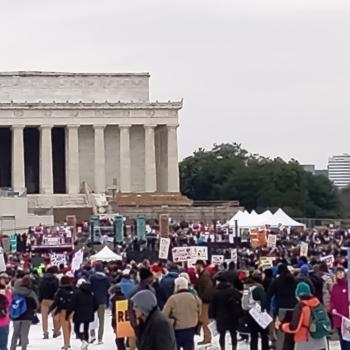Joel Kotkin, author of “The City” (a great read) has an op-ed in today’s Wall Street Journal called “The Rise of Family Friendly Cities.” To set the stage, here’s a bit from that book:
“Cities are humanity’s greatest creation,” Kotkin writes. And, “[t]o be successful today, urban areas must resonate with the ancient fundamentals — they must be sacred, safe, and busy.” Kotkin suggests that one of the new “urban renewal” strategies — i.e., fading cities re-inventing themselves as hip, edgy congregating points for so-called “young creatives” — is not likely to succeed because it departs so markedly from these “ancient fundamentals” in failing to appreciate the role that the sacred, and the religious, long played in the developing and sustaining of cities: “Almost everywhere, the great classical city was suffused with religion and instructed by it. ‘Cities did not ask if the institutions which they adopted were useful . . . . These institutions were adopted because religion had wished it thus.’ In contemporary discussions of the urban condition [including, I’m afraid, many “new urbanist” discussions], this sacred role has too often been ignored.”
And, here is an essay by Kotkin on the importance of religion, and of the “sacred”, to the city.
Kotkin has become known for, among other things, deflating the recently-big-buzz idea that the way for cities to thrive is to attract young “creative class” types to hip, coffee-shop-populated urban fun-zones. (See, e.g., Richard Florida’s “Rise of the Creative Class.” In today’s essay, Kotkin returns to this theme:
For much of the past decade, business recruiters, cities and urban developers have focused on the “young and restless,” the “creative class,” and the so-called “yuspie”–the young urban single professional. Cities, they’ve said, should capture this so-called “dream demographic” if they wish to inhabit the top tiers of the economic food chain and enjoy the fastest and most sustained growth. . . .
There is a basic truth about the geography of young, educated people. They may first migrate to cities like New York, Los Angeles, Boston or San Francisco. But they tend to flee when they enter their child-rearing years. Family-friendly metropolitan regions have seen the biggest net gains of professionals, largely because they not only attract workers, but they also retain them through their 30s and 40s. . . .
The evidence thus suggests that the obsession with luring singles to cities is misplaced. Instead, suggests Paul Levy, president of Philadelphia’s Center City district association, the emphasis should be on retaining young people as they grow up, marry, start families and continue to raise them. . . .
Only 14% of Center City residents have children, Mr. Levy says, and roughly half its young people depart once they enter their mid-30s. “If you want to sustain the revival you have to deal with the fact that people with six year olds keep moving to the suburbs,” Mr. Levy suggests. “Empty nesters and singles are not enough.”
. . . Boosters such as Mr. Levy look increasing towards reviving the traditional family neighborhoods which surround Center City. His organization has worked closely with local public and private schools, church and civic organizations to build up the support structures that might convince today’s youthful inner city urbanites to remain as they start families. “Our agenda,” Mr. Levy says, “has to change. We have to look at the parks, the playgrounds and the schools.”
Such a shift in emphasis could mark a new beginning for many long-neglected urban neighborhoods across the country. It’s time to recognize that today, as has been the case for millennia, families provide the most reliable foundation for successful economies.











